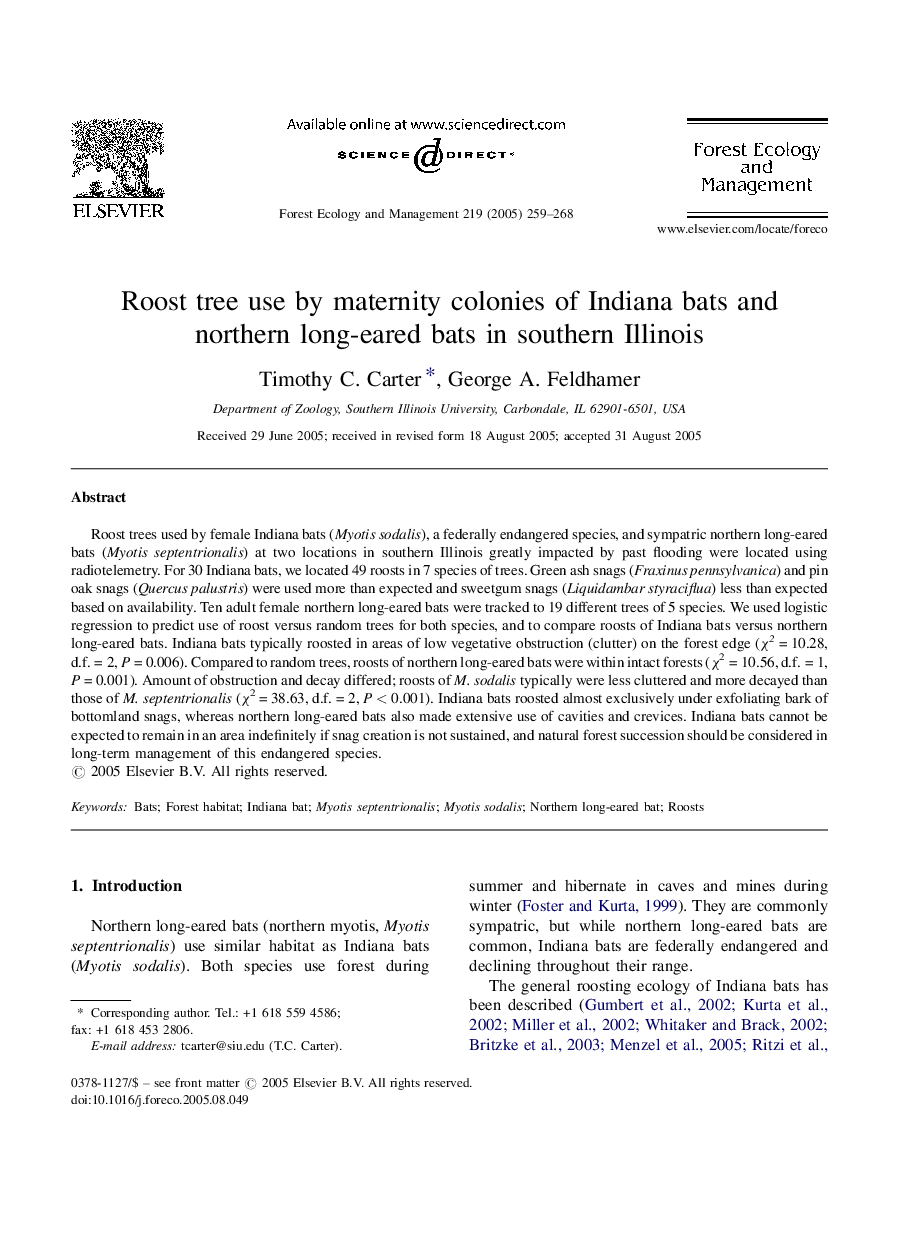| کد مقاله | کد نشریه | سال انتشار | مقاله انگلیسی | نسخه تمام متن |
|---|---|---|---|---|
| 9620110 | 159439 | 2005 | 10 صفحه PDF | دانلود رایگان |
عنوان انگلیسی مقاله ISI
Roost tree use by maternity colonies of Indiana bats and northern long-eared bats in southern Illinois
دانلود مقاله + سفارش ترجمه
دانلود مقاله ISI انگلیسی
رایگان برای ایرانیان
موضوعات مرتبط
علوم زیستی و بیوفناوری
علوم کشاورزی و بیولوژیک
بوم شناسی، تکامل، رفتار و سامانه شناسی
پیش نمایش صفحه اول مقاله

چکیده انگلیسی
Roost trees used by female Indiana bats (Myotis sodalis), a federally endangered species, and sympatric northern long-eared bats (Myotis septentrionalis) at two locations in southern Illinois greatly impacted by past flooding were located using radiotelemetry. For 30 Indiana bats, we located 49 roosts in 7 species of trees. Green ash snags (Fraxinus pennsylvanica) and pin oak snags (Quercus palustris) were used more than expected and sweetgum snags (Liquidambar styraciflua) less than expected based on availability. Ten adult female northern long-eared bats were tracked to 19 different trees of 5 species. We used logistic regression to predict use of roost versus random trees for both species, and to compare roosts of Indiana bats versus northern long-eared bats. Indiana bats typically roosted in areas of low vegetative obstruction (clutter) on the forest edge (Ï2 = 10.28, d.f. = 2, P = 0.006). Compared to random trees, roosts of northern long-eared bats were within intact forests (Ï2 = 10.56, d.f. = 1, P = 0.001). Amount of obstruction and decay differed; roosts of M. sodalis typically were less cluttered and more decayed than those of M. septentrionalis (Ï2 = 38.63, d.f. = 2, P < 0.001). Indiana bats roosted almost exclusively under exfoliating bark of bottomland snags, whereas northern long-eared bats also made extensive use of cavities and crevices. Indiana bats cannot be expected to remain in an area indefinitely if snag creation is not sustained, and natural forest succession should be considered in long-term management of this endangered species.
ناشر
Database: Elsevier - ScienceDirect (ساینس دایرکت)
Journal: Forest Ecology and Management - Volume 219, Issues 2â3, 25 November 2005, Pages 259-268
Journal: Forest Ecology and Management - Volume 219, Issues 2â3, 25 November 2005, Pages 259-268
نویسندگان
Timothy C. Carter, George A. Feldhamer,